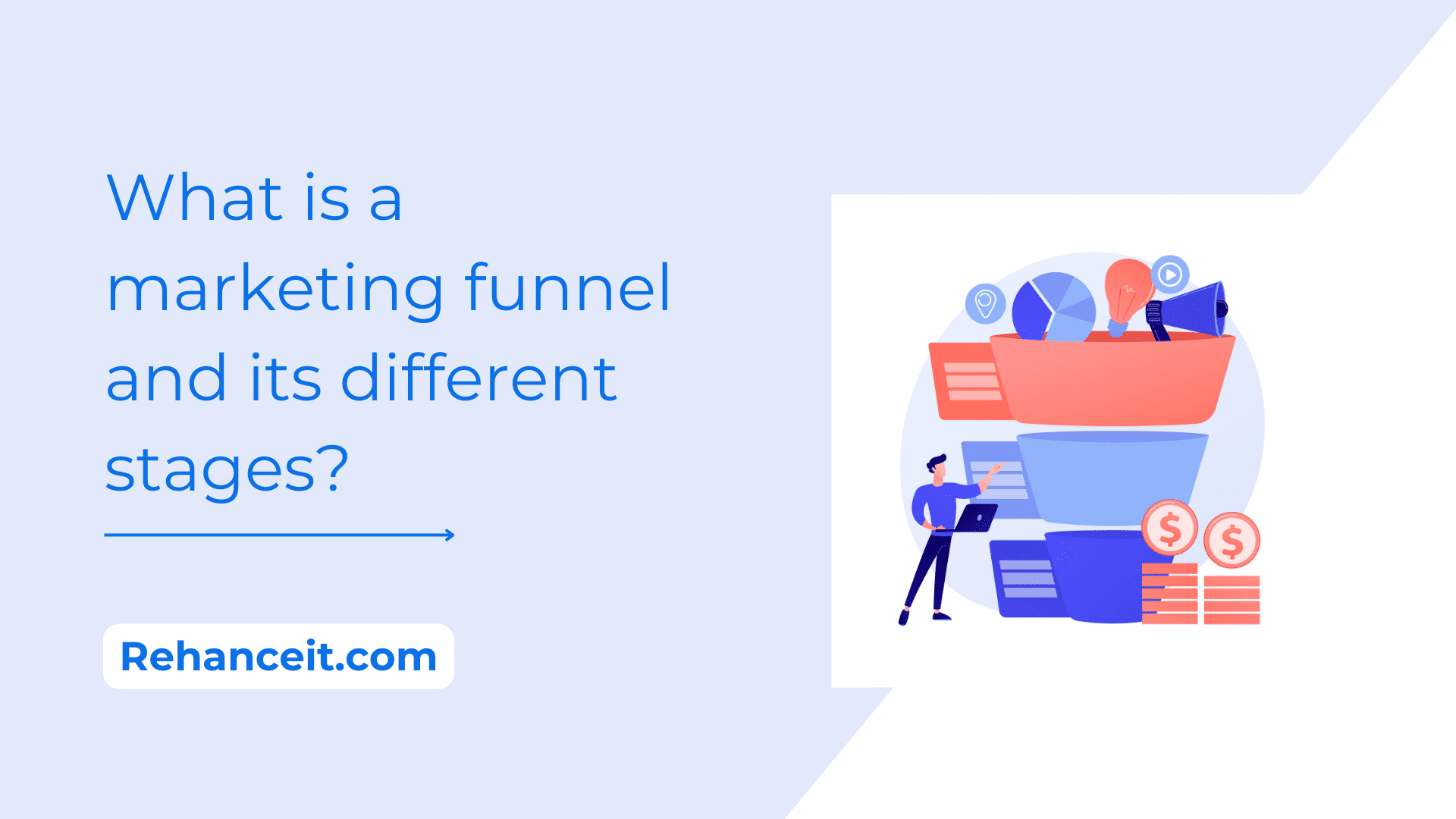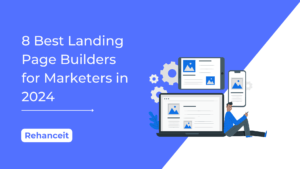A marketing funnel helps different businesses meet their goals by guiding potential customers through a series of steps that lead to sales or other desired actions.
Now let’s find out what a marketing funnel is.
Table of Contents
What is a Marketing Funnel?
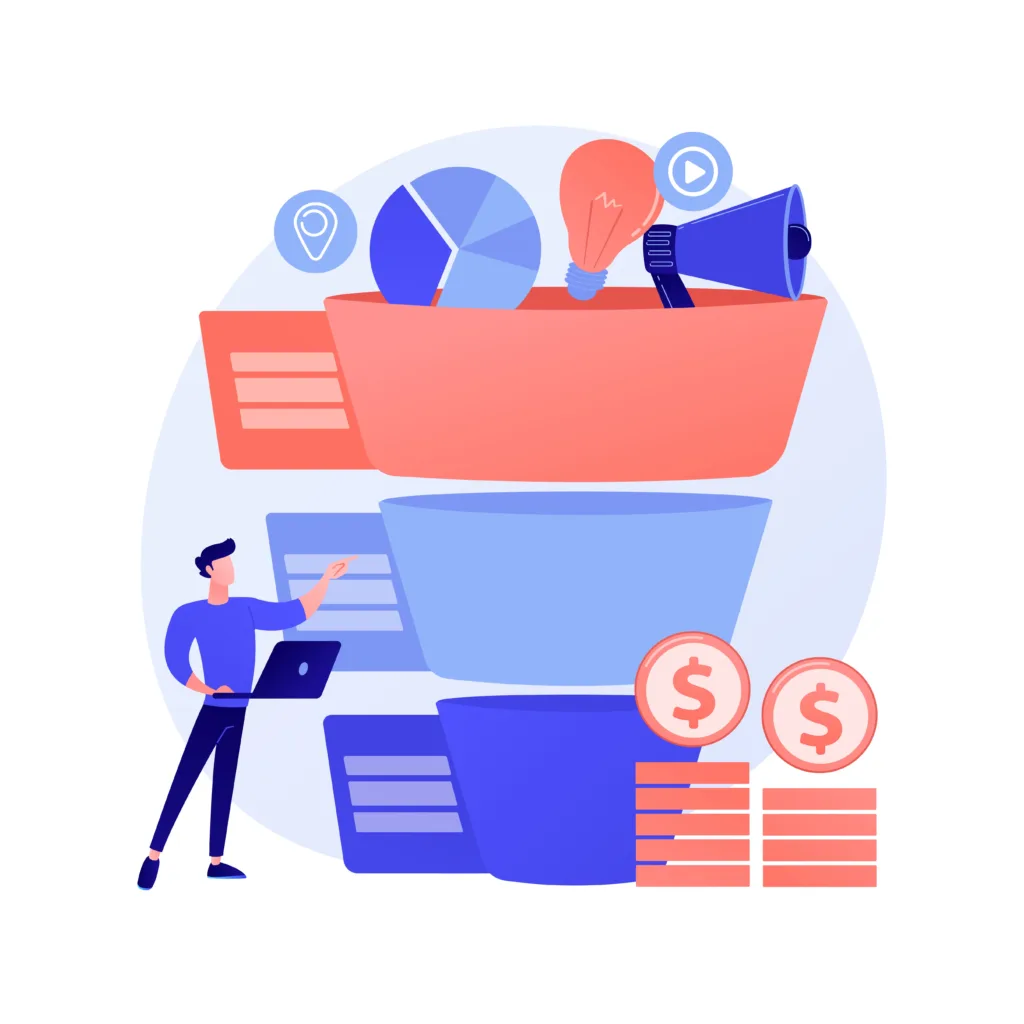
A marketing funnel is like a journey that customers take from first hearing about a product or service to making a purchase. It is a process of different stages through which a user passes until they become a paying customer.
Now that we have understood what a marketing funnel is, let’s uncover the different stages of a marketing funnel that can help you in getting more sales and boost your business revenue.
Also Read – 8 Best Landing Page Builders for Marketers in 2024
What are the different stages of a Marketing Funnel?
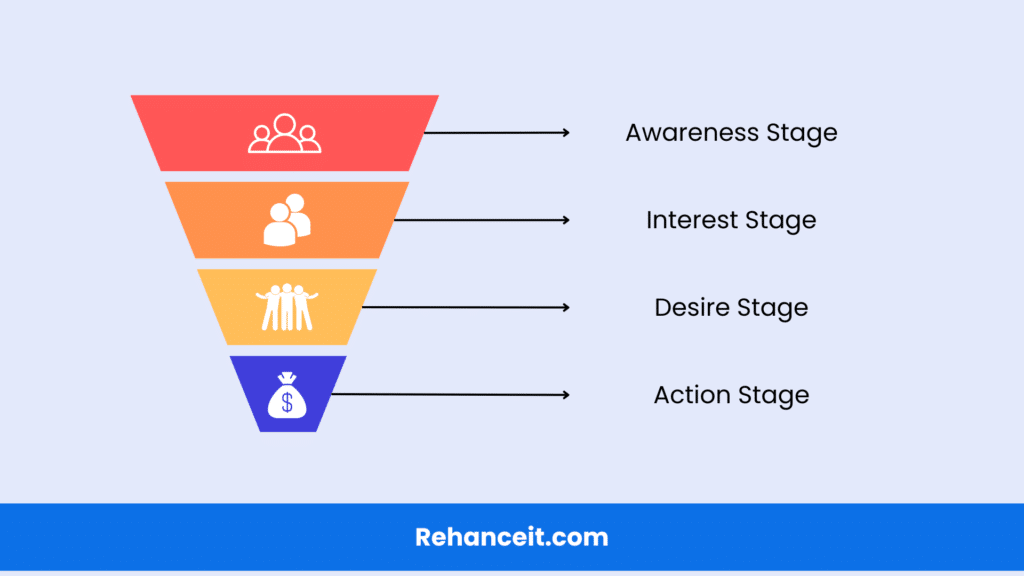
Let’s understand the different stages of a marketing funnel one by one.
Awareness Stage
This is the first stage of a marketing funnel. At this stage, customers become aware of your product or service. It could be through ads, social media, or word of mouth. Imagine it as saying “hello” to someone for the first time.
The main goal of the awareness stage is to grab the attention of your targeted audience and make them curious about what you are offering.
At this stage, you can focus on creating awareness through eye-catching advertisements, engaging social media posts, or informative content.
Interest Stage
The interest stage of a marketing funnel is where potential customers show some interest and engage further with your product or service. At this point, they have moved beyond mere awareness and are actively seeking more information.
During this stage, people might visit your website, read blog posts, watch videos, or interact with your social media content. In the stage the people will get to know how they can benefit from the product and services that you are offering, you can move targeted audience closer to making a purchasing decision.
The main goal of the interest stage is to build trust and credibility in the eyes of the users.
Desire Stage
The Desire stage is when people really want your product. It’s like when you see a delicious pizza ad and suddenly crave pizza. During this stage, you make your product even more tempting by showing its benefits, sharing stories from happy customers, and making it seem special or urgent. You might use ads, emails, or special offers to convince people that they really need your product or service.
The goal is to turn interest into a strong desire to buy. By tapping into people’s emotions and needs, you can make them excited to take the next step and become a paying customer.
Action Stage
During this stage, customers take action by making a purchase, signing up for a service, or contacting you for more information. Your job is to make it easy for them to do so. The key is to remove any obstacles that might stop people from buying and to make the experience as smooth as possible.
Once they’ve taken action, congratulations! You’ve successfully guided them through the marketing funnel and turned them into a paying customer.
Customer Retention Stage
This stage is crucial for businesses as it aims to improve long-term relationships with customers, maximize their lifetime value, and turn them into advocates for the brand.
During the customer retention stage, businesses engage with customers through various strategies such as personalized communication, loyalty programs, exclusive offers, and exceptional customer service. By providing value and support, businesses aim to reinforce customer satisfaction, encourage repeat purchases, and minimize the churn rate.
The 3 Different Levels of a Marketing Funnel
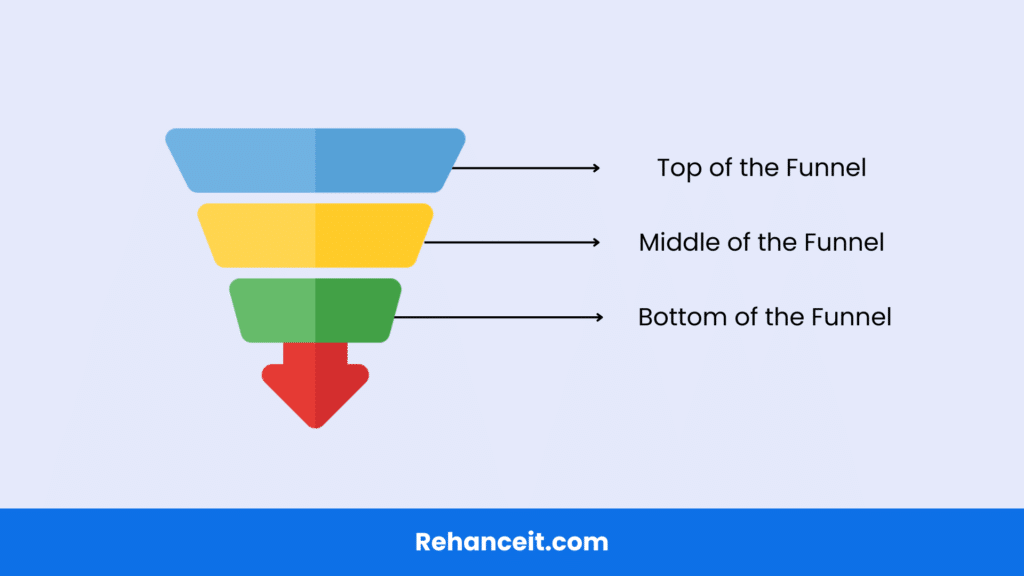
- Top of the Funnel (TOFU) – This is where people first hear about your brand. You want to get their attention and make them interested.
- Middle of the Funnel (MOFU) – Now, they’re interested and looking for more information. You want to give them helpful stuff to help them decide if they want to buy from you.
- Bottom of the Funnel (BOFU) – At the Bottom of the Funnel (BOFU), customers are prepared to make a purchase. It’s important to simplify the buying process and ensure their satisfaction even after they’ve made a purchase.
Examples of a Marketing Funnel
In the case of an E-ecommerce store –
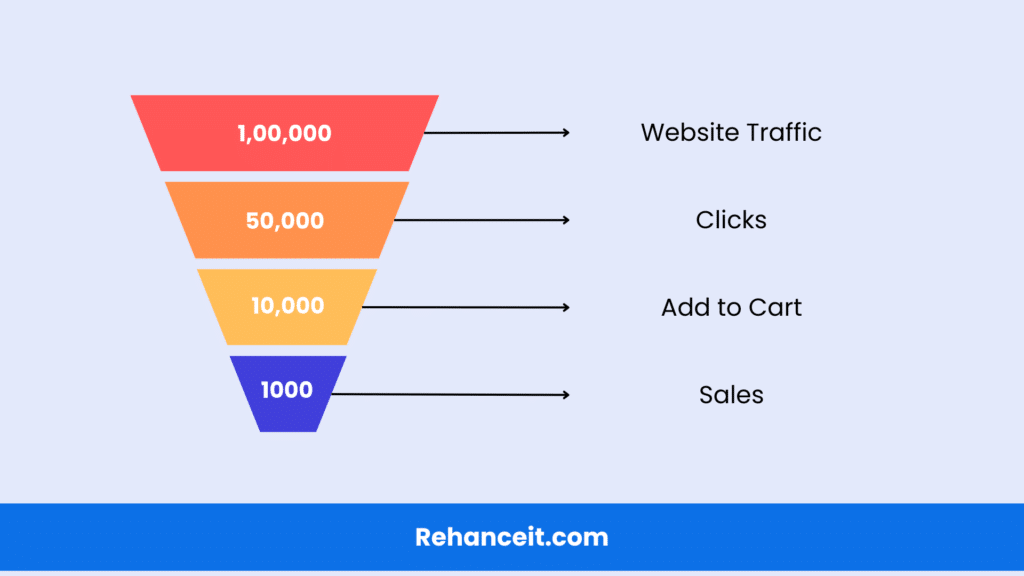
- Awareness Stage– Potential customers discover the store through social media ads or Google searches in the form of page views.
- Interest Stage – They explore product pages, read reviews, and sign up for the store’s newsletter.
- Desire Stage – Customers compare products, add items to their cart, and proceed to checkout.
- Action Stage – They make a purchase and receive an order confirmation.
- Retention Stage – The store sends follow-up emails with related product recommendations and offers loyalty rewards for future purchases.
Why do we need a marketing funnel?
A marketing funnel is like a blueprint that helps businesses and marketers to attract and guide customers towards making a purchase. It’s important because it organizes the steps from first hearing about a product to actually buying it.
At the top of the funnel, people learn about the product, then they become interested, think about buying it, and finally, they make the purchase. Without a funnel, businesses might struggle to reach potential customers or convince them to buy. So, having a marketing funnel is like having a plan that leads to more sales and helps businesses generate more revenue.
Who need a marketing funnel?
- Anyone who is interested in selling a product or service.
- Businesses aiming to attract more customers.
- Individuals or companies seeking to increase sales.
- Entrepreneurs looking to grow their customer base.
- Organizations wanting to streamline their marketing efforts.
- Anyone interested in converting leads into customers.
- Companies focused on improving their online presence and sales.
